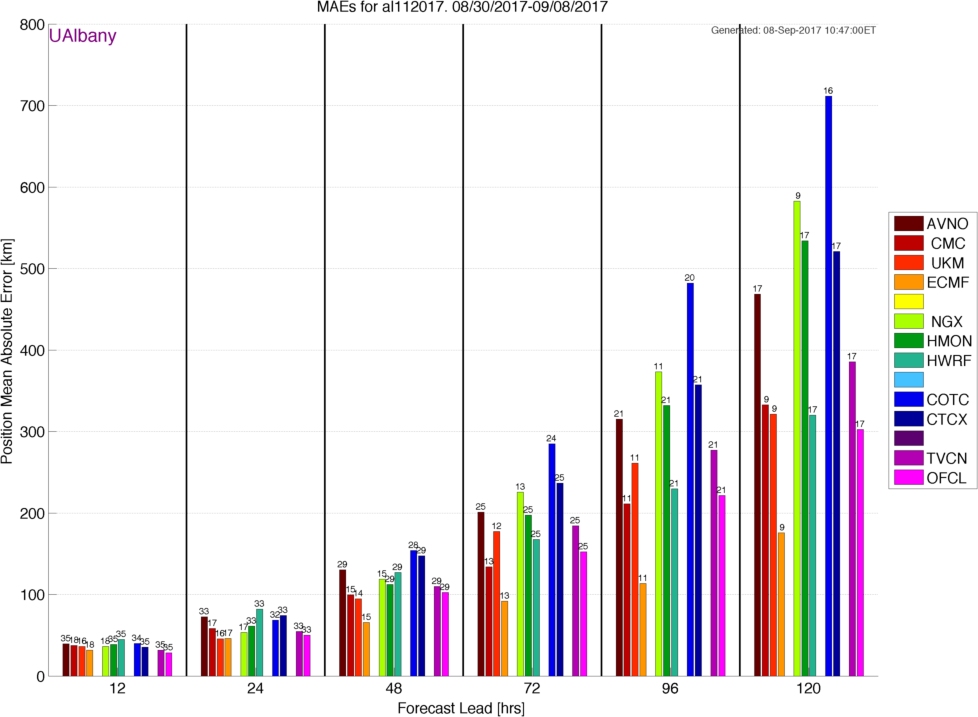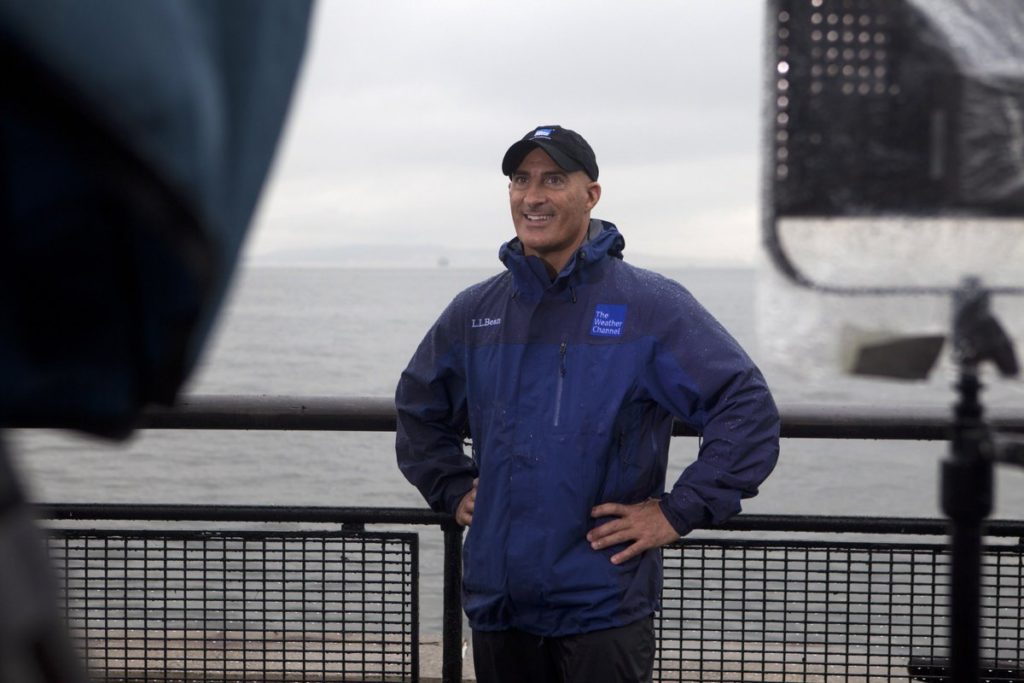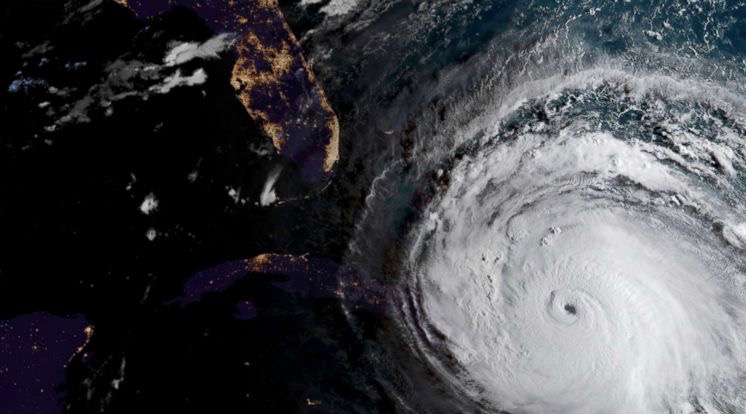How is U.S. president Hillary Clinton handling what has turned out to be an especially dangerous 2017 tropical season? If we believed the 2016 presidential polls, we would be asking ourselves that question right now. The polls were wrong, though (well except for Robert Cahaly’s polls).
Clinton didn’t win the White House, Donald Trump did … for whatever that’s been worth.
Now America is having another crisis of accuracy, except in addition to the ongoing #FakeNews nonsense now we’ve got #FakeWeather to contend with. We’re referring of course to the wildly inaccurate forecasts associated with Hurricane Irma – the monster storm that’s currently bearing down on the west coast of Florida.
Predicting Irma’s path has been a dicey proposition – especially for American forecasters.
According to Eric Berger of Ars Technica, America’s meteorologists have been getting their butts kicked on Irma by European forecasters – who have have consistently been more accurate in charting the path of this dangerous system.
“The average error of the European model with respect to Irma has been about 175 kilometers in its position forecast,” Berger wrote. “The next best forecast is from the hurricane center, which is slightly more than 300 kilometers.”
For those of you unhip to the metric, the accuracy of a hurricane prediction is based on something called “mean absolute error” – which refers to the difference between where hurricanes actually wind up and where meteorologists told us they were going to go.
Atmospheric scientist Brian Tang of the University of Albany has been tracking that data, and recently published an informative breakdown of how various tracking models have performed in regards to Irma …
(Click to view)

(Via: University of Albany)
In the United States, the task of predicting the path of tropical storms and hurricanes falls to the National Centers for Environmental Prediction (NCEP) – a division of the National Oceanic and Atmospheric Administration (NOAA).
Their best model? It’s the one in pink. The European model? It’s in orange. And in this graph the smaller the bar, the better.
Why are American agencies failing to consistently produce accurate data? According to Berger, Europe’s forecasters have “superior resources and computing power.” In fact, American modeling “has lagged for years behind the European forecast system.”
“They let a supercomputer run advance analytical modeling on the path of the storm,” one of our sources explained, referring to the American models as a “conglomerate of partial computer models.”
Something else could be at play, too, though …
“American forecasters want ratings, not accuracy,” our source explained.
Hold up … like “reality forecasting?”
Exactly …
(Click to view)

(Via: iStock)
America’s corporate forecasters want a dramatic Jim Cantore live shot from Miami – the south Florida metropolis Hurricane Irma was supposed to hit head-on. But didn’t.
In fact Cantore himself admits that he over-dramatizes his forecasts – exaggerations he claims are in the public’s best interests.
“I have to paint the worst possible scenario,” Cantore told The Miami Herald upon his arrival in town two days ago. “It would be a disservice to do otherwise. There are dark skies ahead potentially. God help us.”
Like his forecasting – that’s inaccurate. Cantore does a disservice to the public when he does anything other than accurately report on the weather.
Why do forecasters engage in such intentional alarmism?
“(It) helps them push the climate change narrative,” our source added.
Ah yes … well that explains it.
Fortunately, president Clinton is on top of the problem … right?
***
WANNA SOUND OFF?
Got something you’d like to say in response to one of our stories? Please feel free to submit your own guest column or letter to the editor via-email HERE. Got a tip for us? CLICK HERE. Got a technical question? CLICK HERE.
Banner via NASA
